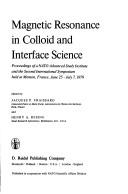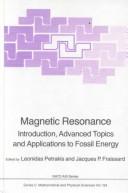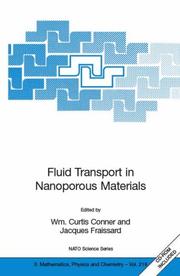| Listing 1 - 10 of 18 | << page >> |
Sort by
|
Book
Year: 1962 Publisher: Gap impr. Louis-Jean
Abstract | Keywords | Export | Availability | Bookmark
 Loading...
Loading...Choose an application
- Reference Manager
- EndNote
- RefWorks (Direct export to RefWorks)
Book
Year: 1985
Abstract | Keywords | Export | Availability | Bookmark
 Loading...
Loading...Choose an application
- Reference Manager
- EndNote
- RefWorks (Direct export to RefWorks)
Book
ISBN: 2130381782 Year: 1983 Publisher: Paris : PUF - Presses Universitaires de France,
Abstract | Keywords | Export | Availability | Bookmark
 Loading...
Loading...Choose an application
- Reference Manager
- EndNote
- RefWorks (Direct export to RefWorks)
Book
ISBN: 222581323X 9782225813238 Year: 1989 Publisher: Paris : Masson,
Abstract | Keywords | Export | Availability | Bookmark
 Loading...
Loading...Choose an application
- Reference Manager
- EndNote
- RefWorks (Direct export to RefWorks)
Equilibre chimique. --- Solutions (Chimie) --- Oxydoreduction. --- Solubilite. --- Acides et bases, Théories des --- Electrodes. --- Acids --- Bases --- Equilibrium --- Redox reaction
Digital
ISBN: 9789048130627 Year: 2009 Publisher: Dordrecht Springer Netherlands
Abstract | Keywords | Export | Availability | Bookmark
 Loading...
Loading...Choose an application
- Reference Manager
- EndNote
- RefWorks (Direct export to RefWorks)
Measuring methods in physics --- Optics. Quantum optics --- Nuclear physics --- Solid state physics --- Physicochemistry --- Theoretical spectroscopy. Spectroscopic techniques --- Materials sciences --- Chemical technology --- meetmethoden --- materiaalkennis --- spectroscopie --- fysica --- fysicochemie --- spectrometrie

ISBN: 9027711534 9400990812 9400990790 Year: 1980 Volume: vol 61 Publisher: Dordrecht ; Boston, MA : D. Reidel,
Abstract | Keywords | Export | Availability | Bookmark
 Loading...
Loading...Choose an application
- Reference Manager
- EndNote
- RefWorks (Direct export to RefWorks)
Digital
ISBN: 9781402043826 Year: 2006 Publisher: Dordrecht Springer
Abstract | Keywords | Export | Availability | Bookmark
 Loading...
Loading...Choose an application
- Reference Manager
- EndNote
- RefWorks (Direct export to RefWorks)
Classical mechanics. Field theory --- Thermodynamics --- Physicochemistry --- Macromolecules --- Chemistry --- Water supply. Water treatment. Water pollution --- Engineering sciences. Technology --- Computer. Automation --- thermodynamica --- BIT (biochemische ingenieurstechnieken) --- chemie --- informatica --- waterverontreiniging --- ingenieurswetenschappen --- mechanica --- polymeren --- fysicochemie
Book
ISBN: 9789048130627 Year: 2009 Publisher: Dordrecht Springer Netherlands
Abstract | Keywords | Export | Availability | Bookmark
 Loading...
Loading...Choose an application
- Reference Manager
- EndNote
- RefWorks (Direct export to RefWorks)
Nuclear quadrupole resonance (NQR) a highly promising new technique for bulk explosives detection: relatively inexpensive, more compact than NMR, but with considerable selectivity. Since the NQR frequency is insensitive to long-range variations in composition, mixing explosives with other materials, such as the plasticizers in plastic explosives, makes no difference. The NQR signal strength varies linearly with the amount of explosive, and is independent of its distribution within the volume monitored. NQR spots explosive types in configurations missed by the X-ray imaging method. But if NQR is so good, why it is not used everywhere? Its main limitation is the low signal-to-noise ratio, particularly with the radio-frequency interference that exists in a field environment, NQR polarization being much weaker than that from an external magnetic field. The distinctive signatures are there, but are difficult to extract from the noise. In addition, the high selectivity is partly a disadvantage, as it is hard to build a multichannel system necessary to cover a wide range of target substances. Moreover, substances fully screened by metallic enclosures, etc. are difficult to detect. A workshop was held at St Petersburg in July 2008 in an attempt to solve these problems and make NQR the universal technique for the detection of bombs regardless of type. This book presents the essentials of the papers given there.
Measuring methods in physics --- Optics. Quantum optics --- Nuclear physics --- Solid state physics --- Physicochemistry --- Theoretical spectroscopy. Spectroscopic techniques --- Materials sciences --- Chemical technology --- meetmethoden --- materiaalkennis --- spectroscopie --- fysica --- fysicochemie --- spectrometrie

ISBN: 9027717524 9400963807 9400963785 Year: 1984 Publisher: Dordrecht Boston London Reidel
Abstract | Keywords | Export | Availability | Bookmark
 Loading...
Loading...Choose an application
- Reference Manager
- EndNote
- RefWorks (Direct export to RefWorks)
Fossil fuels --- Magnetic resonance --- Analysis --- Congresses.

ISBN: 9781402043789 9781402043826 Year: 2006 Publisher: Dordrecht Springer
Abstract | Keywords | Export | Availability | Bookmark
 Loading...
Loading...Choose an application
- Reference Manager
- EndNote
- RefWorks (Direct export to RefWorks)
The last several years have seen a dramatic increase in the synthesis of new nanoporous materials. The most promising include molecular sieves which are being developed as inorganic or polymeric systems with 0. 3-30nm in pore dimensions. These nanoporous solids have a broad spectrum of applications in chemical and biochemical processes. The unique applications of molecular sieves are based on their sorption and transport selectivity. Yet, the transport processes in nanoporous systems are not understood well. At the same time, the theoretical capabilities have increased exponentially catalyzed by increases in computational capabilities. The interactions between a diffusing species and the host solid are being studied with increasing details and realism. Further, in situ experimental techniques have been developed which give an understanding of the interactions between diffusing species and nanoporous solids that was not available even a few years ago. The time was ripe to bring together these areas of common interest and study to understand what is known and what has yet to be determined concerning transport in nanoporous solids. Molecular sieves are playing an increasing role in a broad range of industrial petrochemical and biological processes. These include shape-selective separations and catalysis as well as sensors and drug delivery. Molecular sieves are made from inorganic as well as organic solids, e. g. , polymers. They can be employed in packed beds, as membranes and as barrier materials. Initially, the applications of molecular sieves were dominated by the use of zeolites.
Porous materials --- Fluid dynamics --- Congresses
| Listing 1 - 10 of 18 | << page >> |
Sort by
|

 Search
Search Feedback
Feedback About UniCat
About UniCat  Help
Help News
News